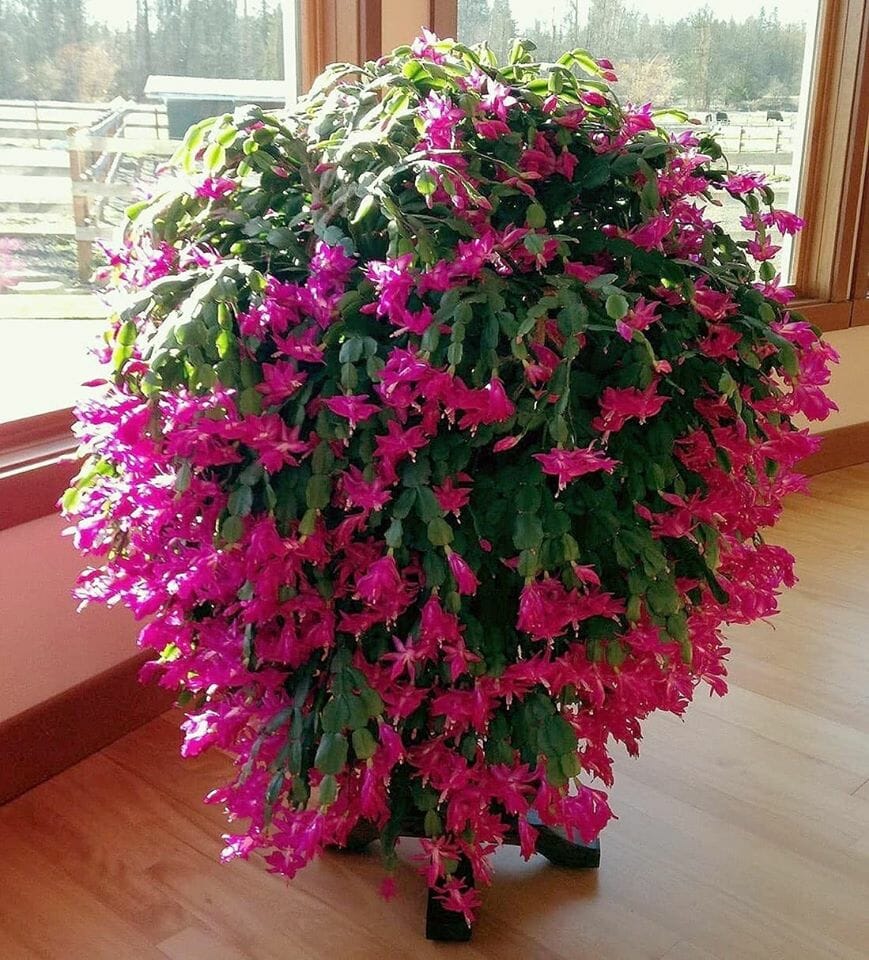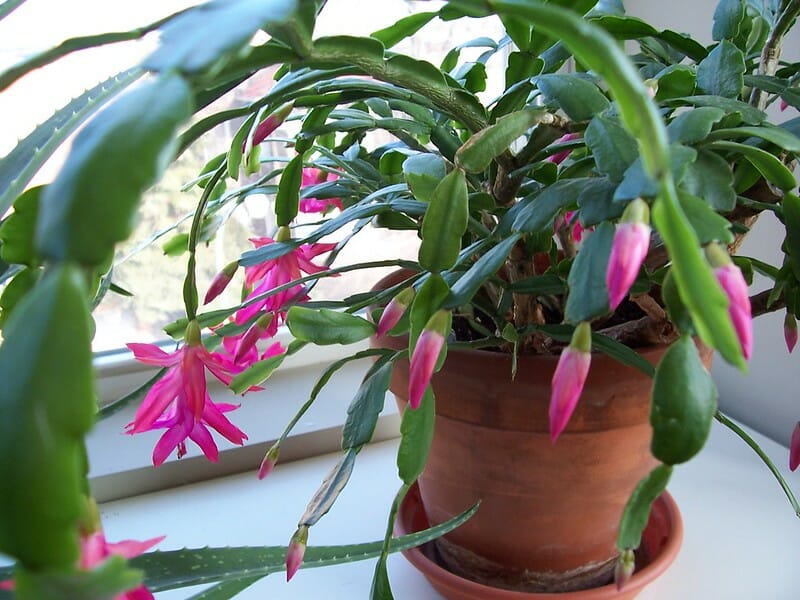When I think of Christmas flowers, only a few plants come to mind. There is one, however, that produces stunning blooms during the holiday season.
A Christmas cactus is a tropical plant that blooms around Christmastime. The plant is native to Brazil and gets its name from its flower shape, which resembles a Christmas tree. Christmas cacti are relatively easy to care for and make great houseplants
The Christmas cactus displays colorful blossoms on thick, scalloped stem segments from late November to late January, making it a popular Christmas gift.
From what I’ve seen, most Christmas cactuses are quite small and can also be tricky to maintain. That said, I’ve also seen several examples of giant Christmas cactuses on the internet and therefore thought we should find out how to grow this wonderful flower even bigger and stronger.

First things first: A Christmas cactus can easily reach a spread of two feet within a few years, and they add new growth throughout their entire lives. The older the cactus, the larger it can become. Did you know that Christmas cactuses never stop growing? Truth be told, they don’t have a maximum size.
If you take care of your Christmas cactus it can grow and bloom for more than 20 years, according to Home guides.
If you want a lush, full Christmas cactus to adorn your home each holiday season, follow these tips. Your Christmas cactus will thrive with just a little bit of extra attention during the spring and summer months. By fall, you’ll have a beautiful plant that will be ready to provide holiday cheer.
Here are some tips to make sure your Christmas cactus gets bigger every year:
The best soil for a Christmas cactus
When it comes to Christmas cacti, the best soil is a gritty, well-drained mix. This type of soil will help to prevent the roots from Rotting. A good potting mix for Christmas cacti should also contain some organic matter to help retain moisture.
When watering your Christmas cactus, be sure to use room-temperature water and allow the soil to dry out completely between waterings. Overwatering is one of the main reasons why Christmas cacti fail to thrive.
If you live in an area with high humidity, you may need to provide additional ventilation for your Christmas cactus by placing it on a pebble tray or opening a window. Excess humidity can cause the leaves of the plant to turn yellow and drop off.
5 steps to stimulate root growth in a Christmas Cactus
Water
Avoid overwatering the cactus, because it can cause root rot. From early November to late January and then early April to late September, water the soil whenever it’s dry, at a depth of 1 inch. Be a little bit more careful with watering from late January to early April and again from late September to early November. Only water the Christmas cactus once a week during that period.
As the Christmas cactus grows, it will need more water. Water the plant when the soil is dry to the touch. Be sure to water at the base of the plant and not on the leaves. The Christmas cactus does not like to be overwatered, so be sure to let the soil dry out in between watering.

Repot
If you want your plant to keep growing, make sure you don’t have a pot that is too large for a Christmas cactus. That can actually slow growth.
If you have a slow-growing cactus, try repotting it in something smaller than its current pot. It’s important that the new pot has bottom drainage holes. While you’re changing pots, you might want to try another potting mix option that’s made from equal portions of potting soil, leaf mold, and sand.
10 Things Every Christmas Cactus Owner Needs To Know
Fertilize your Christmas cactus
One hack to reboot your Christmas cactus is by using Epsom salt. Take 1 teaspoon of the salt and mix it in 1 gallon of water once a month from early April through early September.
According to SF Gate, you can also fertilize your plant with 1/2 teaspoon of 20-20-20, water-soluble fertilizer per 1 gallon of water, monthly from April to September. One important thing to remember though: Don’t use the 20-20-20 during the same week you use the Epsom salt-water solution.

Air temperature
Keep the plant’s room air temperature at 60 to 68 F during fall and winter and keep it 70 to 80 F – but not above 90 F – during spring and summer.
During the fall and winter time, Christmas cactuses shouldn’t have access to more than eight to 10 hours of bright light per day, in order to encourage bud formation and blooming.

Last year my Christmas cactus bloomed for Christmas. I believe it will bloom by Thanksgiving this year since it has buds.
Please share this article if you want one of these plants for the holiday season!

